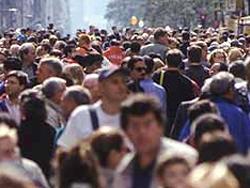As Inflation Surges, Americans Are Adding Credit Card Debt
Washington, DC, August 3, 2022-Credit card debt surged in the United States from April through June as Americans borrowed billions of dollars to continue spending in the face of growing inflation, according to a Tuesday report from the Federal Reserve Bank of New York and reported by the Washington Post.
“Credit card balances increased $46 billion in the second quarter, a 5.5% increase from the first quarter, and there was also an uptick in new credit card accounts. The 13% increase from the second quarter of 2021 to the second quarter of 2022 was the biggest such jump in more than 20 years.
“‘Americans are borrowing more, but a big part of the increased borrowing is attributable to higher prices,’ researchers for the New York Fed said in a news release.
“The numbers provide new context for a consumer spending report released by the Bureau of Economic Analysis last week, which showed that spending in June climbed 1.1%. Similar to the New York Fed’s findings, gas prices, which surged past $5 a gallon in many parts of the country in the second quarter, and inflation, which jumped 9.1% year over year in June, were the likely drivers of the increased debt.
“A rise in new credit card accounts in the second quarter-233 million-marked a high not seen since 2008, according to Tuesday’s report. But researchers for the New York Fed noted that delinquency rates for credit card debt is still relatively low. Despite a slight increase, it is still below pre-pandemic numbers. The total outstanding credit card debt rose to $890 billion in the second quarter, a $100 billion increase from the same time last year.
“The report released Tuesday found that household debt increased in the second quarter by $312 billion, or 2%, compared with the first quarter. Total balances are now $2 trillion higher than before the pandemic.
“Mortgage balances saw the highest increase, which is in line with the central bank’s raising interest rates to cool down the blazing hot housing market. Auto loans also went up, with balances in the second quarter increasing by $33 billion, which is on track with increases since 2011, according to the report.”
